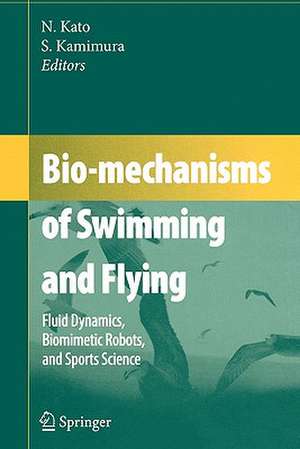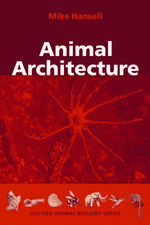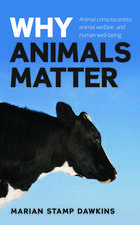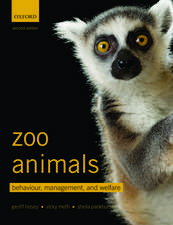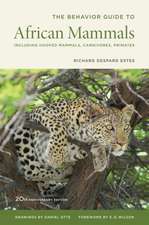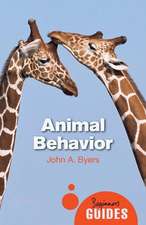Bio-mechanisms of Swimming and Flying: Fluid Dynamics, Biomimetic Robots, and Sports Science
Editat de Naomi Kato, Shinji Kamimuraen Limba Engleză Paperback – 9 noi 2010
| Toate formatele și edițiile | Preț | Express |
|---|---|---|
| Paperback (1) | 1222.62 lei 6-8 săpt. | |
| Springer – 9 noi 2010 | 1222.62 lei 6-8 săpt. | |
| Hardback (1) | 1229.10 lei 6-8 săpt. | |
| Springer – 29 oct 2007 | 1229.10 lei 6-8 săpt. |
Preț: 1222.62 lei
Preț vechi: 1491.00 lei
-18% Nou
Puncte Express: 1834
Preț estimativ în valută:
233.98€ • 243.37$ • 193.16£
233.98€ • 243.37$ • 193.16£
Carte tipărită la comandă
Livrare economică 14-28 aprilie
Preluare comenzi: 021 569.72.76
Specificații
ISBN-13: 9784431998297
ISBN-10: 4431998292
Pagini: 420
Ilustrații: XIV, 403 p. 308 illus., 18 illus. in color.
Dimensiuni: 155 x 235 x 22 mm
Greutate: 0.59 kg
Ediția:Softcover reprint of hardcover 1st ed. 2008
Editura: Springer
Colecția Springer
Locul publicării:Tokyo, Japan
ISBN-10: 4431998292
Pagini: 420
Ilustrații: XIV, 403 p. 308 illus., 18 illus. in color.
Dimensiuni: 155 x 235 x 22 mm
Greutate: 0.59 kg
Ediția:Softcover reprint of hardcover 1st ed. 2008
Editura: Springer
Colecția Springer
Locul publicării:Tokyo, Japan
Public țintă
ResearchDescriere
Biomechanics studies of animals in swimming and flying can serve an increasing role in understanding the mechanisms that enable animals to move effectively and efficiently in fluid, as well as analyzing the characteristics of their various forms of behavior in fluid. The rich variety of mechanisms employed by swimming and flying organisms has long been an inspiration for engineers and scientists. These areas of research, which form the basis of this volume, include the locomotive mechanisms and behaviors of animals in swimming and flying ranging from microorganisms to dolphins from the biological aspect, hydrodynamics of swimming and flying, biomimetic swimming or flying robots, and sports science. This book follows "Bio-mechanisms of Animals in Swimming and Flying" published in 2004 including 11 chapters. This time, the book includes 31 chapters on the latest researches into natural autonomous systems and locomotion in both flying and swimming organisms. The area of sports science such as analysis and simulation of human swimming is newly added. The computational frameworks for the modeling, simulation and optimization of animals in swimming and flying demonstrate an important role in the progress of interdisciplinary work in the fields of biology and engineering. An innovative technology is exhibited for the flight of an insect size micro air vehicle. Neuronal science is not only unveiling the locomotion mechanisms of swimming in fish from the aspect of the neuronal activities, but also applied to underwater biomimetic robots. The interdisciplinary works are exhibited in the fields of biology and engineering, yielding real-world benefits in innovative technologies.
Cuprins
PrefaceAcknowledgments Part 1Biological Aspects of Locomotive Mechanisms and Behaviors of Animals While Swimming and Flying Chapter1: Asymmetric Swimming Motion of Singly Flagellated Bacteria near a Rigid SurfaceChapter2: Properties of a Semi-dilute Suspension of Swimming MicroorganismsChapter3: Dynamics, Modeling and Real-time Observation of Galvanotaxis in Paramecium caudatumChapter4: Object Manipulation by a Formation-Controlled Euglena GroupChapter5: Passive Mechanisms Controlling Posture and Trajectory in Swimming FishesChapter6: Mechanical Properties of the Caudal Fin Resulting from the Caudal Skeletal Structure of the Bluefin TunaChapter7: Design of Artificial Tail Flukes for a Bottlenose DolphinChapter8: Changes in Drag Acting on an Angled Wavy Silicon-rubber Plate as a Model of the Skin Folds of a Swimming DolphinChapter9: Central Nervous System Underlying Swimming Fish Chapter10: Underwater Acoustical Sensing Behavior of PorpoisesChapter11: Microstructural Approach to Developing the Resonance Model of the Indirect Flight Mechanism Part 2Hydrodynamics of Swimming and Flying Chapter12: Studies of Hydrodynamics in Fishlike Swimming Propulsion Chapter13: Optimization of Fish Shape and Swim Mode in Fully Resolved 2-D Flow-field by Genetic Algorithm with the Least-square Prediction MethodChapter14: Modeling, Simulation and Optimization of Anguilliform SwimmersChapter15: A Numerical Study of Hovering Aerodynamics in Flapping Insect FlightChapter16: Stabilization of Flapping-of-Wings Flight of a Butterfly, Considering WakesChapter 17: 3-D Unsteady Computations of Flapping Flight in Insects, Fish, and Unmanned Vehicles Part 3Biomimetic Swimming or Flying Robots Chapter 18: Design and Simulations of a Virtual Fishlike Robot Actuated by a Muscle ModelChapter 19: Development of Fish Robots Powered by Fuel Cells: Improvement of Swimming Ability by a Genetic Algorithm and Flow Analysis by Computational Fluid DynamicsChapter 20: Design and Control of Biomimetic Robot Fish FAC-IChapter 21: Thrust Force Characteristics of the Propulsion Mechanism in Fluid Using a Fin with a Dynamic Variable-Effective-Length SpringChapter 22: Elastic Pectoral Fin Actuators for Biomimetic Underwater VehiclesChapter 23: Design, Development, and Testing of Flapping Fins with Actively Controlled Curvature for an Unmanned Underwater Vehicle Chapter 24: Controlling Biomimetic Underwater Robots with Electronic Nervous SystemsChapter 25: Micro-energy Converter Using Insect WingsChapter26: Clapping-wing Micro Air Vehicle of Insect Size Part 4Sports Science Chapter 27: Study on the Application of Lagrangian Numerical Simulation to Fluid Dynamics in Sports ScienceChapter 28: Rowing Velocity Prediction Program Estimating Hydrodynamic Load Acting on an Oar BladeChapter 29: Analysis of Breast, Back and Butterfly Strokes by the Swimming Human Simulation Model SWUMChapter 30: Research in Fluid Dynamical Specification of Hand Palms in Freestyle SwimmingChapter 31: Flexural Vibration of a Jump Ski in Flight
Caracteristici
Covering of wide range of animals from flagellated microorganisms to marine mammals
Handling of recent new research results on natural autonomous systems and locomotion mechanisms of animals in swimming and flying
Development of interdisciplinary discussions between biology and engineering
Handling of recent new research results on natural autonomous systems and locomotion mechanisms of animals in swimming and flying
Development of interdisciplinary discussions between biology and engineering
